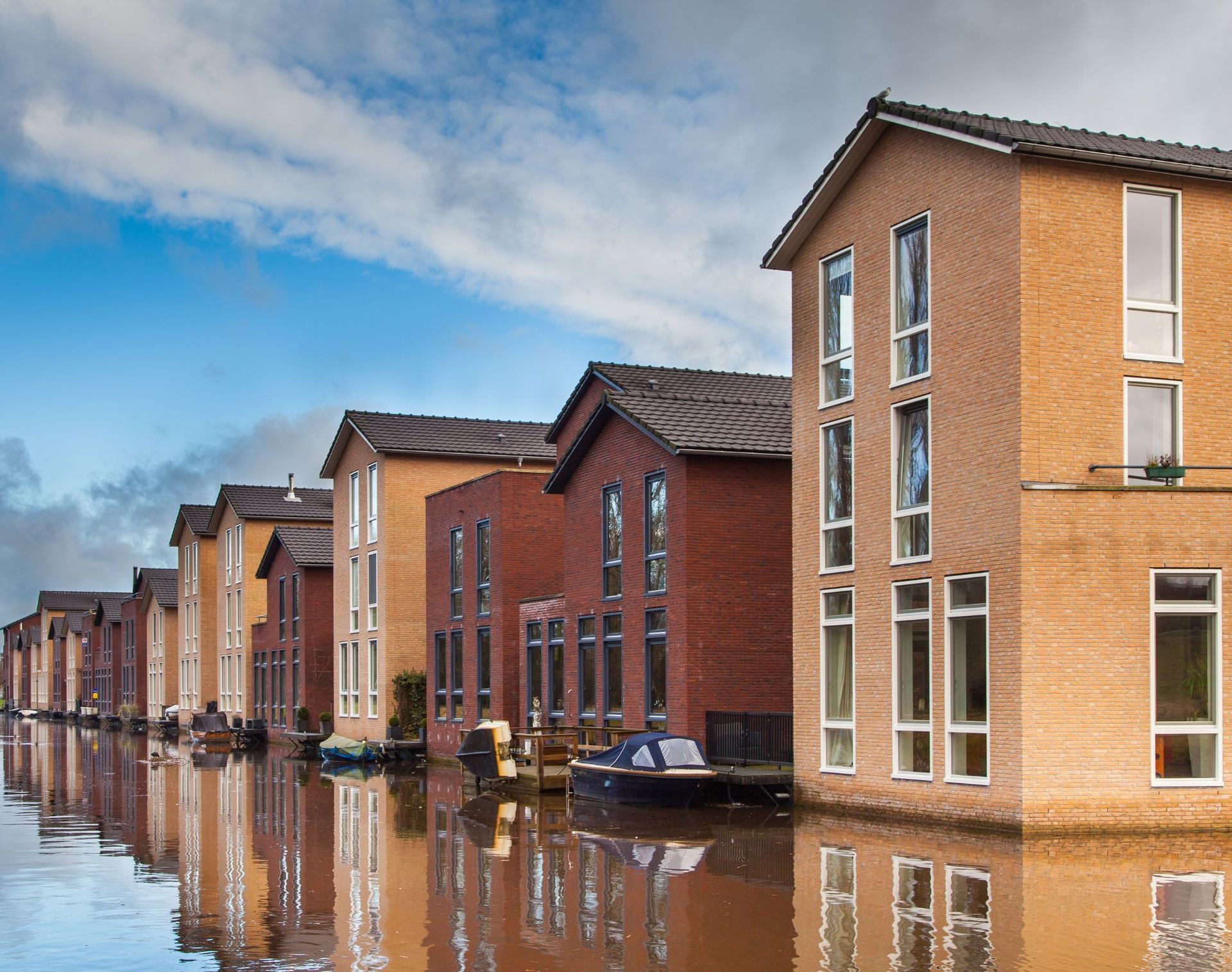Natural Disasters in New York: What They Mean for Your Business Insurance Strategy
See How We're Different
or call us: 646-600-8881
Natural disasters are becoming an increasingly significant concern for businesses across the United States, and New York is no exception. With the rising frequency and severity of catastrophic weather events, understanding how these disasters impact your business and insurance strategy is more crucial than ever. In 2024 alone, natural disasters caused global insured losses of $140 billion, marking one of the most expensive years on record for catastrophe-related damages. For businesses in New York, this reality underscores the importance of a robust, well-informed insurance plan that can withstand the financial shocks of unexpected natural events.
As the U.S. accounted for at least two-thirds of global losses from natural disasters in 2024, driven largely by frequent thunderstorms and wildfires, New York businesses must be proactive. The insurance landscape is evolving rapidly to address these mounting risks, and staying informed can make the difference between recovery and financial ruin. This article explores the current natural disaster climate, the implications for New York businesses, and strategies to optimize your insurance coverage.
For detailed insights into the economic impact of natural disasters, consider the Munich Re report on 2024 insured losses, which highlights the scale and scope of recent catastrophes.
The Rising Cost of Natural Disasters and What It Means for New York Businesses
Natural disasters are not only increasing in frequency but also in their economic impact. In 2024, the United States experienced economic losses from natural disasters totaling $217.8 billion, an 85.3% increase from the previous year. This dramatic rise reflects the growing intensity of weather-related catastrophes, including severe thunderstorms, hurricanes, and flooding events that frequently affect New York and its surrounding regions.
Severe thunderstorms alone caused $57 billion in overall losses in the U.S. during 2024, with $41 billion of that amount insured. Given New York's susceptibility to such storms, businesses here face significant exposure. These events can disrupt operations, damage infrastructure, and lead to costly downtime. The aftermath of these disasters often sees businesses grappling with not just physical damage but also the psychological toll on employees and customers, which can affect productivity and sales for months, if not years.
Understanding these trends is vital for business owners when assessing risk and insurance needs. The rising costs also mean that insurance premiums may increase, and coverage terms could become more stringent. However, having the right insurance strategy can help mitigate these financial risks and ensure business continuity. Additionally, businesses may need to invest in disaster preparedness and recovery plans, which could include training staff, securing backup systems, and even collaborating with local emergency services to create a robust response strategy.
For a comprehensive overview of how natural disasters are driving insured losses, the Swiss Re Institute provides detailed analysis on the U.S. market's significant share of global losses. This analysis highlights not only the financial implications but also the need for a proactive approach to risk management, which can include investing in resilient infrastructure and adopting innovative technologies that help predict and mitigate the effects of severe weather events.
Key Natural Disasters Impacting New York and Their Insurance Implications
Severe Thunderstorms and Flooding
New York frequently experiences severe thunderstorms, which can bring intense rainfall, hail, and damaging winds. These storms often lead to flash flooding, one of the most common and costly natural disasters in the region. In 2024, severe thunderstorms were responsible for $57 billion in losses nationwide, emphasizing the scale of damage such events can cause.
Flooding poses unique challenges for businesses, as standard commercial property insurance policies often exclude flood damage. This gap necessitates specialized flood insurance, typically provided through the National Flood Insurance Program (NFIP) or private insurers. Businesses must evaluate their flood risk carefully, especially those located in low-lying or coastal areas of New York. Moreover, the aftermath of flooding can disrupt supply chains, leading to delays in inventory replenishment and increased operational costs. Companies should also consider the potential for reputational damage if they are unable to meet customer demands due to flooding-related disruptions.
Hurricanes and Tropical Storms
While New York is not as frequently hit by hurricanes as states further south, it remains vulnerable to the remnants of tropical storms and hurricanes that track up the East Coast. These storms can bring heavy rain, flooding, and wind damage. The increasing intensity of hurricanes linked to climate change means that New York businesses should consider hurricane coverage as part of their insurance portfolio.
Business interruption insurance is particularly important for hurricane-prone areas, as storms can cause prolonged closures due to power outages or structural damage. Ensuring that policies cover both property damage and lost income is essential for resilience. Additionally, businesses should engage in proactive risk management strategies, such as developing comprehensive disaster recovery plans and conducting regular drills. This preparation not only aids in minimizing losses but also enhances the overall safety and readiness of employees during such emergencies.
Winter Storms and Extreme Cold
New York's harsh winters can lead to ice storms, heavy snowfall, and freezing temperatures, all of which pose risks to businesses. Damage from ice accumulation, burst pipes, and power failures can be extensive. While some of these risks are covered under standard property insurance, others may require additional endorsements or separate policies.
Preparing for winter-related risks includes reviewing coverage for equipment breakdowns and ensuring that business interruption policies reflect potential cold-weather impacts. Furthermore, businesses should invest in winterization strategies, such as insulating pipes and installing backup heating systems, to mitigate the risk of damage. Regular maintenance checks and employee training on winter safety protocols can also play a crucial role in minimizing risks associated with extreme cold. By taking these proactive steps, businesses can better safeguard their assets and ensure continuity during the winter months.
Developing a Resilient Business Insurance Strategy in New York
Given the increasing severity and cost of natural disasters, businesses in New York need to adopt a comprehensive approach to insurance. This means going beyond basic coverage and tailoring policies to the specific risks faced by the business.
Assessing Risk and Coverage Gaps
The first step is conducting a thorough risk assessment. This involves identifying the types of natural disasters most likely to affect the business based on location, building structure, and operational vulnerabilities. For example, a business in a flood-prone area should prioritize flood insurance, while one in a region susceptible to thunderstorms might focus more on wind and hail coverage.
Many businesses discover gaps in their insurance policies only after a disaster strikes. Common gaps include insufficient limits, exclusions for certain perils, or lack of coverage for business interruption. Regularly reviewing policies with an insurance advisor can help identify and close these gaps. Additionally, businesses should consider the unique characteristics of their operations; for instance, a restaurant may face different risks than a tech startup, necessitating tailored coverage solutions that reflect their specific needs.
Incorporating Business Interruption and Contingent Business Interruption Coverage
Natural disasters often cause more than just physical damage; they can disrupt supply chains, delay deliveries, and force temporary closures. Business interruption insurance compensates for lost income during these periods, helping businesses stay afloat.
Contingent business interruption coverage extends this protection to losses caused by disruptions at suppliers or customers. This is particularly relevant for New York businesses integrated into complex regional or global supply chains. For instance, if a key supplier located in another state is unable to deliver due to a natural disaster, this coverage can help mitigate the financial impact, allowing businesses to maintain operations and meet customer demands without significant delays.
Investing in Risk Mitigation and Preparedness
Insurance premiums and coverage terms are increasingly influenced by a business’s risk mitigation efforts. Investing in measures such as flood barriers, storm-resistant building materials, and emergency response plans can reduce vulnerability and may lead to lower insurance costs.
Moreover, insurers often require proof of such measures before offering comprehensive coverage. Businesses should document all mitigation efforts and maintain open communication with their insurance providers. This proactive approach not only strengthens a business’s insurance position but also fosters a culture of preparedness among employees. Training staff on emergency protocols and conducting regular drills can enhance overall resilience, ensuring that everyone knows their role in the event of a disaster.
For businesses seeking to understand how natural disasters are reshaping insurance costs and coverage, the Munich Re America report on 2025 insured losses offers valuable insights into current trends. Additionally, engaging with local business associations and participating in community preparedness initiatives can provide further resources and support, helping businesses to not only protect themselves but also contribute to the resilience of the wider community.
Preparing for the Future: Trends and Considerations for New York Businesses
The outlook for natural disasters suggests that New York businesses will continue to face significant risks. Climate change is expected to increase the frequency and severity of extreme weather events, making proactive insurance planning essential. As businesses grapple with these challenges, they must also consider the potential economic impacts of such disasters, which can disrupt supply chains, lead to property damage, and cause loss of income during recovery periods.
Emerging trends in the insurance industry include the development of parametric insurance products, which pay out based on the occurrence of predefined events (such as a hurricane of a certain category) rather than assessed damages. These products can offer faster claims processing and more predictable payouts, allowing businesses to recover more quickly from disasters. Moreover, as technology advances, insurers are increasingly leveraging data analytics to refine their risk assessments, which can lead to more tailored insurance solutions that meet the specific needs of individual businesses.
Additionally, there is growing emphasis on sustainability and resilience in underwriting practices. Businesses that demonstrate environmental responsibility and disaster preparedness may benefit from more favorable insurance terms. This shift is not only about securing better rates; it also reflects a broader societal movement towards corporate responsibility. Companies that invest in green technologies or implement robust disaster response plans are not only protecting their bottom line but also enhancing their brand reputation among consumers who prioritize sustainability.
Finally, staying informed about regulatory changes and government programs related to disaster insurance can provide additional support. For example, updates to the National Flood Insurance Program and state-level initiatives may affect coverage options and costs. Engaging with local chambers of commerce and industry associations can also provide valuable insights into best practices and emerging resources that can aid in navigating these complexities.
To keep pace with these evolving dynamics, New York businesses should maintain ongoing dialogue with insurance professionals and regularly update their risk management strategies. This proactive approach not only prepares businesses for potential disasters but also fosters a culture of resilience that can enhance overall operational stability.
For a broader perspective on how natural disasters are impacting economic losses globally and the U.S. specifically, the Aon PLC analysis provides detailed data and forecasts. Understanding these trends can empower businesses to make informed decisions about their risk management strategies and insurance needs, ensuring they are well-prepared for whatever challenges lie ahead.
Conclusion: Taking Action to Protect Your Business
Natural disasters pose a growing threat to businesses in New York, with increasing economic and insured losses signaling the need for vigilant insurance strategies. From severe thunderstorms and flooding to hurricanes and winter storms, the risks are diverse and evolving.
By conducting thorough risk assessments, addressing insurance coverage gaps, investing in mitigation measures, and staying informed about industry trends, businesses can better protect themselves against the financial fallout of natural catastrophes. The stakes are high, but with the right approach, resilience is achievable.
Ultimately, a well-crafted business insurance strategy is not just a safety net—it is a critical component of long-term business sustainability in an era of unprecedented natural disaster challenges.

Insights









